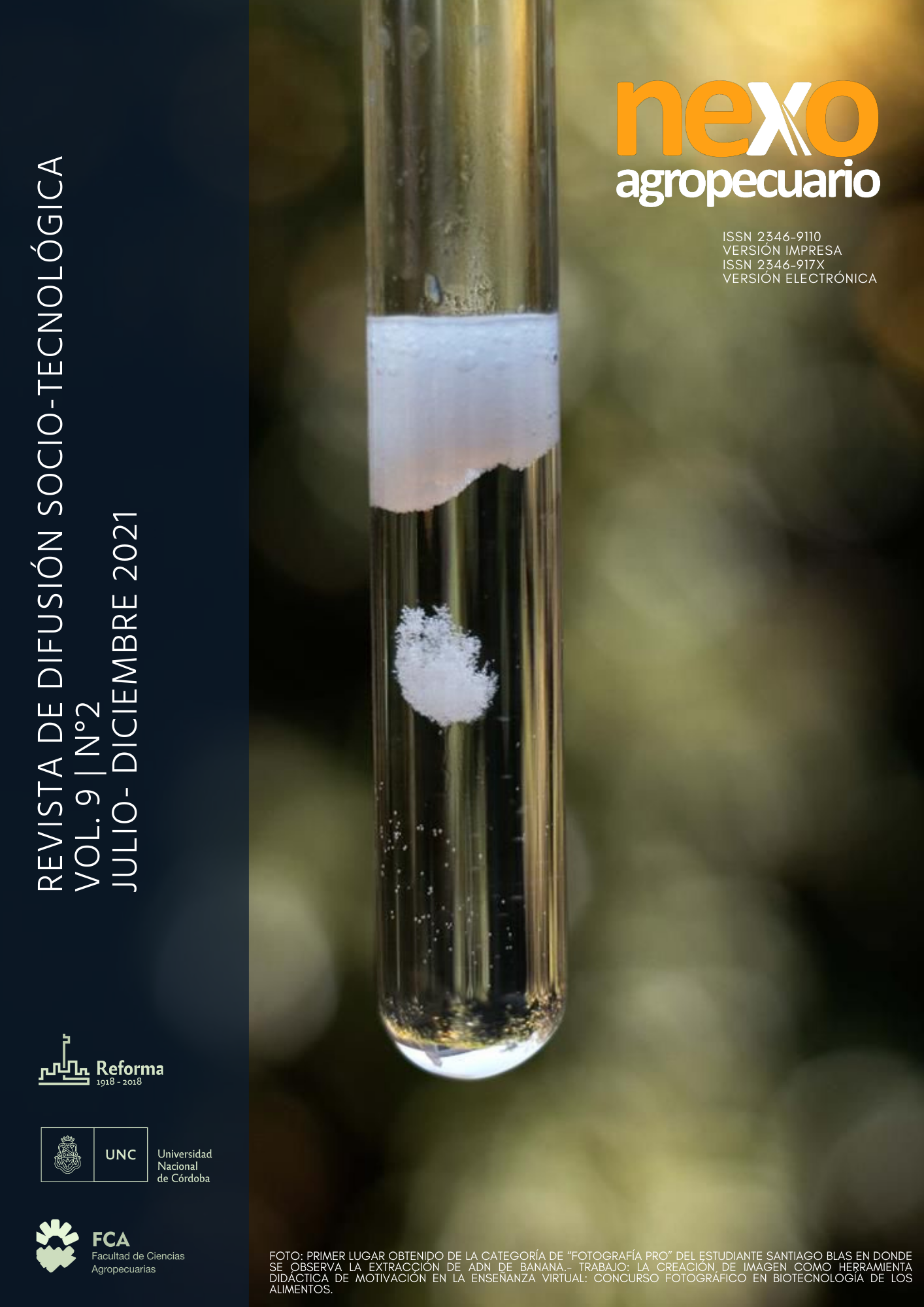EVALUACIÓN DE DOS ALTERNATIVAS DE MANEJO DE MALEZAS EN EL CULTIVO DE AJO EN TRANSICIÓN AGROECOLÓGICA
Keywords:
Allium sativum, weeds, mulching, labourAbstract
Garlic (Allium sativum L.) is a species with high nutraceutical values, also used in natural pest control preparations. It has the difficulty of its low competitive ability, because it demands a lot of energy for the control of associated weeds. Two weed management alternatives, accessible in family farming to minimise labour costs in this activity, were evaluated in the Campo Escuela of the FCA-UNC, using bulbs of three cultivars (Serrano, Pampeano and Alpa Suquía), agroecologically produced in the Germplasm Bank of the Institution. Plots of 4 m2 were planted, with 3 replicates in each treatment. A control with weed control, manual soil removal and another design with mulching with dry grasses in the inter-row spaces. The number of tillage operations required to maintain low weed incidence, the labour time required and the garlic yield at the end of the cycle were evaluated. The mulching treatment required significantly less time (47 %) for weed control than the control over the whole cycle. Yields were significantly higher (p< 0.05) with mulch around them. It is feasible to change the crop design, adding a component to the system that provides different ecosystem services already proven, reducing the investment in labour time and increasing its biological productivity.
Downloads
References
Ciocchini, F.I.; Sarandón S.J.; Carbone, A.; Palladini Asse, C.; Mutti, M.J. y Rocha S. (2015). Policultivo de amaranto con leguminosas, una alternativa de manejo agroecológico de malezas para agricultores familiares de la provincia de Buenos Aires. En: Memorias del V Congreso Latinoamericano de Agroecología. Recuperado de: http://memoriasocla.agro.unlp.edu.ar/ Trabajo A1-506.
FUNAF (IV Congreso del Foro de las Universidades Nacionales para la Agricultura Nacional)- 2018. Cuarta circular. Recuperado de: https://drive.google.com/file/d/1L2P8nwl0pRB5OGsFOPMMQSEnOwyhWVUL/view
Gorgas, J.A. y Tassile J.L. (2003). (Compiladores). Los suelos. Córdoba, Argentina. Ed.: Agencia Córdoba. D.A.C. y T. S.E.M. Dirección Ambiente- INTA Manfredi. Recursos Naturales de la provincia de Córdoba.
Jarquin Gálvez R., Rojas Velázquez M. y Ramírez Tobías H.M. (2015). Efecto de la quema de caña azúcar en las propiedades del suelo en San Luis Potosí, México. En: Memorias del V Congreso Latinoamericano de Agroecología. Recuperado de: http://memoriasocla.agro.unlp.edu.ar/ Trabajo A1-8.
Zamar, J.L., M. Arborno, L. Pietrarelli, G. Serra, H. Leguía y J. Sanchez 2015. La regulación biótica y las prácticas agroecológicas en los cultivos extensivos. En: Memorias del V Congreso Latinoamericano de Agroecología. Recuperado de: http://memoriasocla.agro.unlp.edu.ar/ Trabajo A1- 25.
Downloads
Published
Issue
Section
License

This work is licensed under a Creative Commons Attribution-NonCommercial-ShareAlike 4.0 International License.
Aquellos autores/as que tengan publicaciones con esta revista, aceptan los términos siguientes:- Los autores/as conservarán sus derechos de autor y garantizarán a la revista el derecho de primera publicación de su obra, el cuál estará simultáneamente sujeto a la Licencia de reconocimiento de Creative Commons que permite a terceros compartir la obra siempre que se indique su autor y su primera publicación esta revista.
- Los autores/as podrán adoptar otros acuerdos de licencia no exclusiva de distribución de la versión de la obra publicada (p. ej.: depositarla en un archivo telemático institucional o publicarla en un volumen monográfico) siempre que se indique la publicación inicial en esta revista.
- Se permite y recomienda a los autores/as difundir su obra a través de Internet (p. ej.: en archivos telemáticos institucionales o en su página web) después del proceso de publicación del número de la revista, lo cual puede producir intercambios interesantes y aumentar las citas de la obra publicada. (Véase El efecto del acceso abierto).


